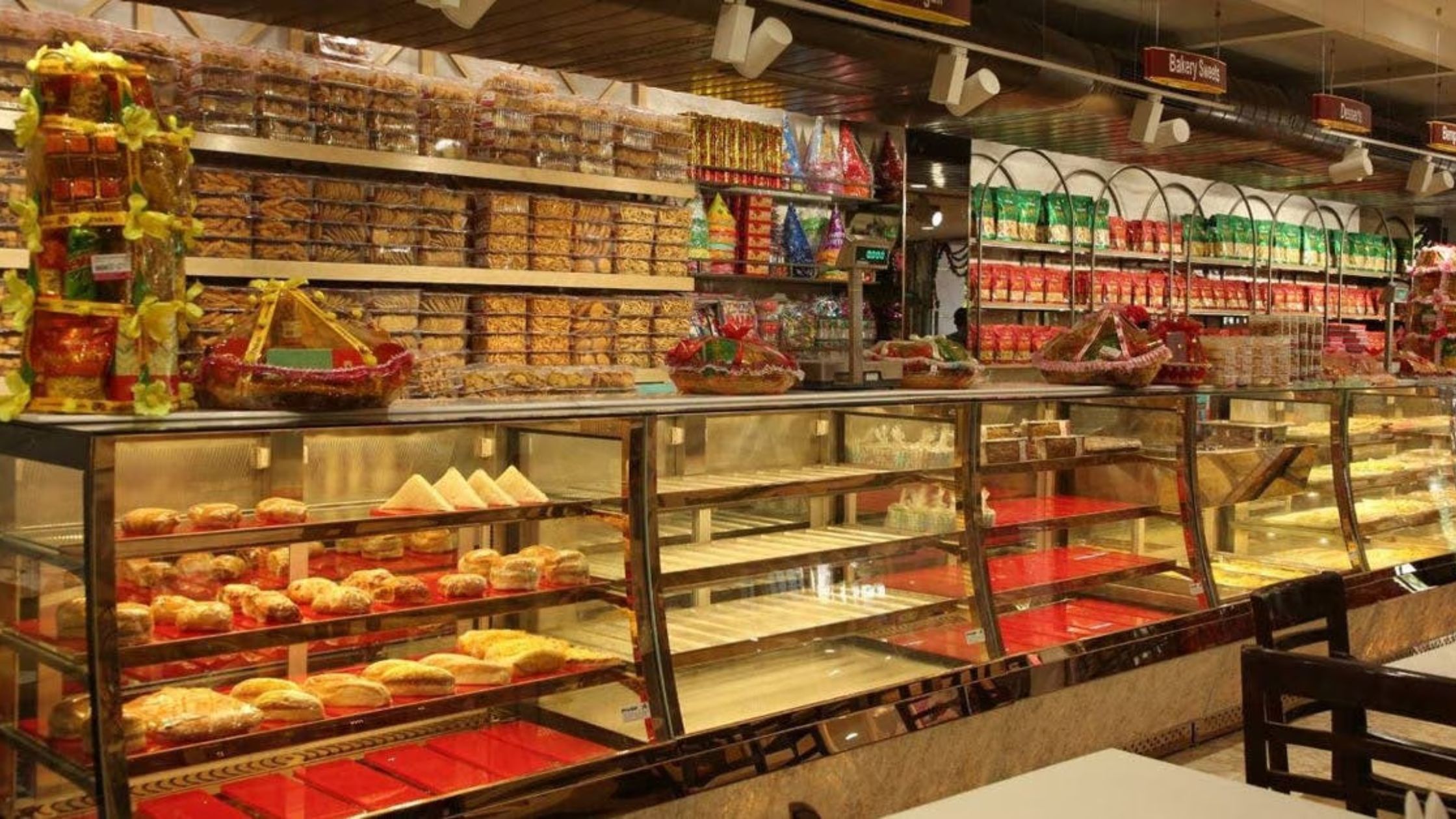Starting a sweet shop on a low investment can be a satisfying and viable venture if done strategically. Start by focusing on a small, manageable setup that minimizes overhead costs. Consider a small shop or home-based operation to save on rent and utilities. Invest in the necessary kitchen equipment and quality ingredients, but start with only the basic items initially to reduce initial expenses. Plan your menu carefully to include popular and cost-effective sweets that appeal to your target market, and consider offering a limited selection initially to simplify your production and inventory management.

Table of Contents
In addition to a low-cost setup, grow your brand and attract customers using cost-effective marketing strategies. Showcase your products using social media platforms, engage with your community, and run promotions that attract new customers. Word-of-mouth recommendations can also be a powerful tool, so focus on excellent customer service and high-quality sweets to earn repeat business and positive reviews. By combining a thoughtful approach to budgeting with effective marketing and customer engagement, you can successfully launch and grow your sweet shop without a large initial investment.
1. Preparing a Business Plan: Menu, Pricing, and Operation Strategy
Preparing a business plan is extremely important for the successful operation of your sweet shop. First, clearly define your menu, including a list of the sweets you will offer. Make sure your menu has a variety of sweets, such as traditional Indian sweets, chocolates, and seasonal specialties. Also, include quality and cost-effective options in the menu, so that customers can enjoy the variety and you can also control your costs.

When pricing the options, keep in mind the cost of ingredients and other expenses. Adopt a pricing strategy that is reasonable according to the quality of your product and the competition in the market. You can also include discounts or special offers in the pricing to attract your customers, but make sure it does not reduce your profit margin. The right balance of pricing will help keep your Sweet Shop business stable and profitable.
Focusing on operational strategy, create a solid plan to streamline your daily operations. This includes hiring employees, purchasing raw materials, stock management, and customer service. Prepare a timetable and train your staff to run your operations smoothly. Ensure that your customers always get fresh and high quality sweets and your service is top-notch, which will strengthen your business’ reputation and customer base.
2. Selecting a location: Choose an affordable space or start from home
Selecting a location is an important decision that can have an impact on the success of your sweet shop. If you have a limited budget, choosing an affordable location may be your best choice. Look for spaces available at a small or low-cost rent, such as in a small market or suburb, where the freight is low and the flow of customers is also reasonable. This can help you control your initial costs and reduce financial pressure in the initial stage of the business.

On the other hand, if you want to reduce your costs even further, consider starting a Sweet Shop business from home. Home-based operations will not only help you save on rent costs, but you can also use your existing kitchen equipment and resources. For this, you have to prepare a part of your house appropriately for making and packing sweets and ensure that all health and safety standards are followed.
While choosing a location, also keep in mind that your customers can easily reach your shop. If you’re starting from home, make sure you promote your business well through online or local marketing so that your potential customers can access your products. The location you choose will affect your shop’s accessibility, cost, and customer experience, so it’s important to choose it carefully.
3. Buying Equipment: Buy the Necessary Kitchen Tools and Utensils
Choosing the right kitchen equipment and utensils is extremely important for starting a sweet shop. Initially, you should only buy the necessary equipment so that you can control costs and facilitate the start of your business. Basic equipment such as mixers, ovens, baking trays, and cooling racks will make your sweet-making process easy and effective. Pay attention to the quality of these equipment as they directly affect the quality of your sweets.

Additionally, you will also need smaller equipment and utensils, such as measuring cups, spoons, spatulas, and kitchen scales. These tools will help ensure the right quantity and quality of sweets. When shopping for utensils, prefer items that are durable and stylish, so that your product offering also looks professional.
When you are buying your equipment, keep the budget in mind and shop from vendors who offer good value and quality. Compare the various options available in the market and choose the most suitable and affordable option. With the right equipment, your dessert-making process will be more efficient and organized, increasing your business’s chances of success.
4. Source of ingredients: Choose high-quality but affordable ingredients
Choosing high-quality ingredients is extremely important for running a sweet shop successfully. Good ingredients directly affect the taste and quality of your sweets, giving your customers a great experience. However, it is necessary to control cost as well as quality. Therefore, you should choose ingredients that are delicious and full of freshness, but also fit in the budget.

When shopping for ingredients, compare different suppliers and markets. You can consider buying ingredients in bulk, which can give you better value and keep costs in check. Also, try to get freshness and quality ingredients from local farmers or small suppliers, as this can often give you better value and maintain the freshness of your product.
When selecting the right ingredients, pay attention to the specifications and quality standards of the products. You must observe the freshness, taste, and food safety standards of ingredients so that your sweets are not only delicious but also safe. Maintain a good relationship with your suppliers and regularly check the quality of ingredients so that your products always meet high standards.
5. Set up your shop: Design and set up your workspace
When setting up your sweet shop, the first thing you should do is create a well-organized design of your workspace. Arrange the kitchen and sales area properly to maximize the utility of the space you have. Make sure all the necessary equipment and utensils are easily accessible and the workspace has enough space so that you can work without any hindrance. Pay attention to cleanliness and organization so that your customer gets a professional and attractive environment.

Set up all the necessary workspaces such as baking area, packing zone and storage space properly. Design the baking area so that you can easily make sweets and keep all the major equipment in one place. Keep the packing and storage area organized so that raw materials and finished products can be easily stored and managed. A clean and organized workspace not only increases your efficiency but also reflects your professional approach towards the customer.
It is also important to follow safety and hygiene standards in the design of your workspace. Make sure all safety measures are in place, such as proper ventilation, fire safety equipment, and hand washing stations. Take care of regular cleaning and maintenance so that your workspace remains hygienic and feels fresh to your customers. A well-designed and well-organized workspace forms the key to the success of your business.
6.Promote through social media, local events and word-of-mouth promotion
Social media can be an effective and cost-effective way to promote your sweet shop. Share pictures of your products, special offers and promotions using platforms like Facebook, Instagram and Twitter. Regular posts and customer reviews will help build your brand identity and attract more customers. Being active on social media is important to increase the visibility of your business and build a strong online community.

Participating in local events and fairs is also a great way to promote your business. Set up your stall at these events, where you can display your products and meet new customers. By participating in local events, you can give people a taste of your products and generate their interest. This method will not only increase the popularity of your product but will also create recognition for your business in the local community.
Mouth-of-mouth promotion is an old but effective method that is still in effect today. Encourage your current customers to share good experiences and ask them to refer their friends and family. Satisfied customers will help spread the word about the quality of your sweets to their acquaintances, which can help your business spread naturally. Offering special discounts or offers to your customers can also increase your customer acquisition rate.
7. Cost of starting a sweet shop with low investment
Starting a sweet shop with low investment can range from ₹50,000 to ₹1,00,000 according to your budget and plans. The amount of this investment depends on your choice of location. If you start the business on an affordable rent or from home, this cost can be less. While selecting the location, you also need to take into account the geographical location of the area and the potential customer number, which can affect your total cost.

The cost of equipment and ingredients also affects this investment amount. Initially, you will need basic kitchen equipment, such as mixers, ovens, and baking trays. Additionally, the cost of ingredients such as flour, sugar, and other ingredients also needs to be included in the budget. If you buy ingredients in bulk and select good quality but affordable equipment, you can maintain your budget and start the business on the right foot.
The initial stock of the required inventory is also part of this investment. This will include the cost of the initial batch of sweets and packing material. Note that inventory costs may change according to your business plan and market demand. With the right planning and budget management, you can successfully start your sweet shop with minimal investment and control costs.
8. How much does it cost to start a sweet shop
Starting a sweet shop usually requires an investment of ₹50,000 to ₹1,00,000. This amount depends largely on your choice of location. If you start the business from home or choose a small and cheap rented space, you can get by with less investment. An affordable location reduces the cost of rent and utilities, allowing more of your budget to be spent on other needs.
An important factor in investing is purchasing equipment. Basic kitchen equipment such as mixers, ovens, and baking trays will be required. Apart from this, it is also important to spend on quality but affordable ingredients so that the quality of your product is maintained and the budget is also under control. Buying ingredients in bulk helps manage costs and you can get the necessary items right.
Finally, the cost of initial inventory and setup is also included in the total investment. This includes the ingredients for the first batch of sweets, packing materials, and initial marketing expenses. With the right planning and accurate sourcing of items, you can start the business smoothly while staying within your budget and ensuring a successful launch of the sweet shop.
9. Successful launch of sweet shop and focus on customer satisfaction
Before you officially launch your sweet shop, make sure everything is ready to run smoothly. This includes completing all the necessary legal formalities, setting up the shop interiors, and getting the kitchen equipment fully operational. Stock up on all the necessary ingredients and finalize your initial product offerings. Do a soft launch or trial run so you can test operations and address any potential problems on opening day. It is important to prepare at this stage so that launch day can go off without a hitch.

On launch day, create a welcoming and festive atmosphere to attract customers. Use promotional strategies like special offers, discounts, or free samples to attract your initial customers. Promote your launch through social media, local advertising, and word-of-mouth promotion to reach a wider audience. Connect with your customers, explain your offerings, and ensure they have a positive first experience of your sweet shop. Effective marketing and a well-organized launch event can lay a strong foundation for your business.
After the launch, prioritize customer satisfaction to build a loyal customer base. Provide high-quality sweets and excellent service so that customers have a positive experience. Actively seek feedback from your customers and respond to their suggestions and concerns. Building strong relationships with your customers can lead to repeat business and positive word-of-mouth recommendations. Consistently providing unique products and service can help you stand out in a competitive market and contribute to the long-term success of your sweet shop.
Conclusion
Starting a sweet shop with low investment is possible if you focus on strategic planning and careful budget management. The right mix of small but effective setup, quality ingredients, and cost-effective marketing techniques can lead you to a successful business. Focus on the quality of your products and provide excellent service to customers to strengthen your business’ credibility and customer base. Thus, with a strong plan and the right approach, you can make your sweet shop dream a reality and take your business to great heights of success.
If u want to Watch the Video You can visit to our You tube Businovations Channel and watch the video……
Click the link to read the Recent Posts….
Simple Strategies and Tips for Starting a Baby Hamper business (192)


One thought on “Easy Steps to Start a Sweet Shop business on a Low Investment (215)”